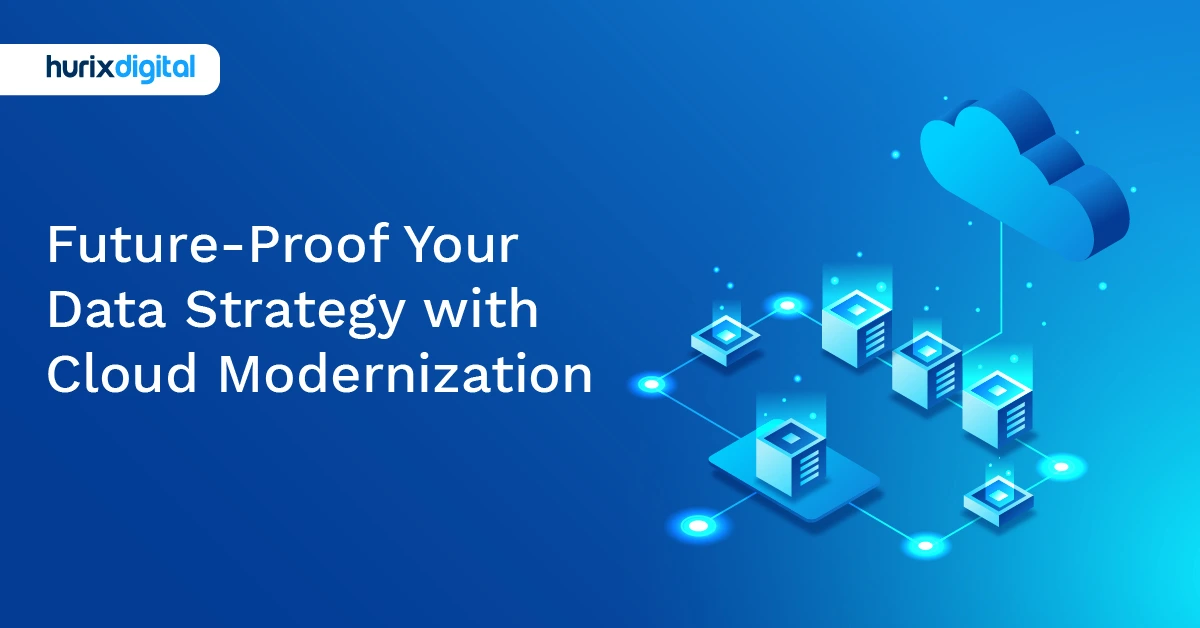
Cloud Cost Optimization: 6 Best Practices for Cloud Cost Optimization
Summarize with:
The trend of enterprises moving their storage and computing requirements to the cloud has consistently maintained an upward trajectory in recent years. With multi-cloud deployments becoming the new normal, migrate from on-premise solutions.
The concept of the cloud came with the promise of lower IT costs and unlimited storage. Businesses were told that they would only be charged for the resources they used.
As the system matured, a gaping loophole in the system started becoming more and more apparent—service providers charged the customers for the resources ordered and not the resources used. This conundrum of resources used vis-à-vis resources ordered opens up a possibility of cloud cost optimization to free up more working capital.
Let’s try to decode what cloud cost optimization means and how you can leverage it to reduce investment in IT storage and computing needs.
Table of Contents:
- What is Cloud Cost Optimization?
- 6 Cloud Cost Optimization Best Practices and Strategies for
- The Impact of Emerging Technologies like AI & ML on Cloud Cost Optimization
- Cloud Cost Optimization: Need of the Hour
What is Cloud Cost Optimization?
Simply put, the cloud optimization strategy is used for trimming costs for cloud technology usage, ensuring that you truly pay for only what you use. This approach relies on enterprises’ understanding of cloud technology needs and pricing systems to look for a way to optimize the usage and efficiency of cloud services, most cost-effectively.
This becomes imperative as the cloud infrastructure matures and becomes more complex in its structure. These complexities—multi-cloud deployment, for instance—can make costs more opaque and harder to track. When you can’t monitor and manage usage appropriately, you run the risk of costs spiraling out of control.
Cloud costs today may be determined by a lot of variables—virtual machine instances, network traffic, software licenses, training and support, web services, storage, and memory, to name a few. These variables may not be included in the upfront cost, which can contribute to a surge in your cloud cost.
Besides, cloud operations and the ensuing costs are essentially fluid and often managed in a decentralized manner, which makes tracking expenses more complex.
It is, therefore, crucial for enterprises to chart out a cloud optimization strategy that takes all these factors into account to get the most out of the infrastructure in place at minimal costs. The aim of a robust cloud optimization strategy should be to reduce overall spending by eliminating waste, leveraging high discounts, identifying mismanaged resources, and right-sizing services to scale.
Also Read: Streamlining DevOps with Integrated Cloud Management Solutions
6 Cloud Cost Optimization Best Practices and Strategies for
Here are the 6 cloud cost optimization strategies to achieve optimal outcomes:
1. Identify Unused Resources
One of the easiest ways to effectively optimize cloud costs is by identifying unused resources. Spinning up a temporary server for a single-use operation and forgetting to turn it off later or not removing storage associated with terminated instances are common use case anomalies that contribute to an increase in cloud costs.
- Step 1: Conduct a cloud inventory check via different tools on cloud management.
- Step 2: Find unused instances of EC2, virtual machines, or storage volumes that have been provisioned quite a time ago but not utilized.
- Step 3: Set up automated alerts to find those resources that are idle for a considerable length of time.
Company A was continually launching new instances for particular short-term workloads but simply forgetting to terminate them after use. They observed unused EC2 instances; eliminating these no-longer-used resources reduced cloud expenditure by 20%.
2. Merge Idle Resources
A resource that is lying idle but is being charged for by the service provider is a significant waste that needs to be plugged in for cost optimization. You must work to zero in on all such resources in your system and merge these to cut costs. If scaling up operations during a busy season or in the event of a spike in traffic is the reason why you are bearing the extra costs, it is time to leverage cloud features such as auto-scaling, on-demand capabilities, and load balancing to scale up computing capacity at any time.
- Step 1: Keep checks on CPU, memory, and storage utilization using monitoring tools.
- Step 2: Identify low-utilization resources, where utilization has dropped to or below 10-15%, yet you are paying the full 100%.
- Step 3: Process resource consolidation or rightsize them.
For instance, let’s say your CPU utilization for current operations is 5 or 10 % of what you have availed, but you are being charged 100%. It’s a classic case of computing resources being wasted.
3. Leverage Heatmaps
As visual tools that show valleys and peaks in your computing demand, heatmaps are vital for achieving cloud cost optimization. The insights offered by a heatmap can be a valuable asset in putting in place start and stop cut-offs for different resources to reduce costs.
- Step 1: Heatmaps are created by using cloud cost management tools that outline your less utilized times when using your cloud resources
- Step 2: Identify low-usage periods and high-demand periods within a day, week, or month.
- Step 3: Schedule your resources to start/stop, thereby automating when your non-essential resources should be stopped during low times.
Example:
For instance, you can use these cloud optimization techniques to identify a time when certain resources are practically lying unused and shut them down for that duration of time. What’s more, the start and stop schedules for different instances can be automated, which means you eliminate the elements of error associated with performing these tasks manually and optimize costs to the maximum.
4. Rightsizing the Resources
Rightsizing refers to an analysis of computing services to identify the most efficient size for your operational requirement.
- Step 1: Rightsize tools to evaluate resource utilization
- Step 2: Review and resize based on your current needs of CPU, memory, and storage.
- Step 3: Indulge in rightsizing automation tools that monitor and adjust resources continuously to avoid over-provisioning.
Example:
With the correct right-sizing tools, you can optimize not just the size of your server but also other elements like database, memory, storage capacity, graphics, etc. Besides helping with cost reduction, such cloud optimization techniques also help in cloud optimization that facilitates peak performance of the resources you pay for.
5. Invest in Reserved Instances
Enterprises that seek to embrace the cloud for the long haul can improve on costs by investing in Reserved Instances (RIs). These are lucrative discounts offered based on time commitment and upfront payment.
- Step 1: Conduct a usage patterns analysis to predict the resource requirements you would need in the future
- Step 2: Choose the right RI Plan based on your demand
- Step 3: Monitor and adjust to understand reserved instances.
Example:
Your savings through the right RI adoption can be up to 75%, which makes it a valuable cog in your cloud cost optimization plan. However, to make sure that you are getting the most bang for your buck through RIs, it is important to base your future demand on a thorough analysis of your past usage patterns.
6. Make Use of Spot Instances
Spot Instances, which are available for auction, can be a smart way to cut back on your cloud spending. Once purchased, these are for immediate use. However, the window for making the bid is usually small, so you have to be on the lookout consistently and move swiftly if the price is right. These cloud optimization techniques are best suited for short-term projects or jobs that can be completed quickly, as they may have limited validity.
- Step 1: Identify the fault-tolerant workloads with minimal disruption such as batch jobs and test environments
- Step 2: Apply spot instances for these workloads
- Step 3: Track spot prices and market trends and make sure you are bidding at the right time.
Example:
A biotech company used Spot Instances to run computational simulations for drug research; the computations could be interrupted. The company was able to save 90% on Spot Instances as compared to on-demand instances while completing their computations within their required timeframes.
The Impact of Emerging Technologies like AI & ML on Cloud Cost Optimization
Emerging technologies such as Artificial Intelligence and Machine Learning have a tremendous impact on cloud cost optimization. Let us explore the key areas where AI and ML can make an impact:
1. Predictive Analytics for Cost Forecasting
Predictive analytics is AI and ML’s most important contribution to cloud cost optimization strategies. According to Gartner, more than 50% of enterprises will use industry cloud platforms to accelerate their business initiatives by 2028.
These technologies enable companies to analyze past usage patterns to predict future demand, thereby allowing companies to alter their resources in the cloud in advanced time frames. This helps companies avoid such increased costs and budget more reasonably.
2. Automated Resource Management
The AI and ML-based tools would automatically manage the cloud resources, which means on-the-go allocation and de-allocation of those resources. Such systems help remove idle resources, a very common factor behind wasted spending. For example, using AI-based services can reduce the costs incurred in terms of waste by 30 to 40 percent.
3. Intelligent Workload Placement
Another key optimization well complemented by AI and ML is intelligent workload placement. The algorithms use various factors, such as performance metrics, energy efficiency, and cost, to decide where to run those workloads, whether on-premises, in the cloud, or a hybrid.
This is very useful in a multi-cloud strategy where businesses would want to use different providers for different types of workloads based on price and performance.
4. Anomaly Detection in Billing and Usage
Another important technique for cloud optimization is anomaly detection in billing and usage. AI algorithms, for example, continuously monitor cloud usage patterns to immediately highlight any anomaly or unusual spending. Businesses are assured of correcting potential errors immediately, thus avoiding wastage.
5. Automated Governance
AI and ML technologies automatically enforce cloud governance policies, ensuring that all resources are being used by the organization’s cost control measures. Businesses that integrate AI into cloud governance frameworks achieve compliance, avoid cost overruns, and follow more streamlined processes.
6. Dynamic Pricing Models
Nowadays, cloud providers extensively make use of AI technology to provide dynamic pricing models that can take advantage of real-time demand. The ML algorithms can analyze the trends of global usage on the cloud infrastructure and, based on it, adjust the pricing. This encourages business organizations to optimize usage during off-peak hours to avail lower prices.
7. Real-Time Usage Optimization
In addition to price, AI and ML can optimize the usage of cloud resources in real-time. In real-time data analysis, continuous machine learning algorithms suggest immediate actions that could lower the cost of products, such as rightsizing virtual machines, consolidating underused instances, or recommending lower-cost storage options.
Also Read: Build Resilient BCDR Plans with Cloud-Managed Services
Cloud Cost Optimization: Need of the Hour
Given that most large organizations have such jobs going almost at all times, these can prove to be a valuable component of any cloud optimization strategy. As cloud spending continues to increase, operating without insight and proper planning can have serious financial repercussions.
That said, the cloud holds great potential for improving business operations, as long as attention is paid to cost optimization to eliminate unexpected spikes, overpaying, or inadequate performance.
Partnering with experts like Hurix Digital ensures your organization can navigate the complexities of cloud management and remain future-ready. Don’t leave your cloud strategy to chance—contact us today to optimize your cloud costs and utilize the full potential of your digital transformation!
 A Space for Thoughtful
A Space for Thoughtful 
